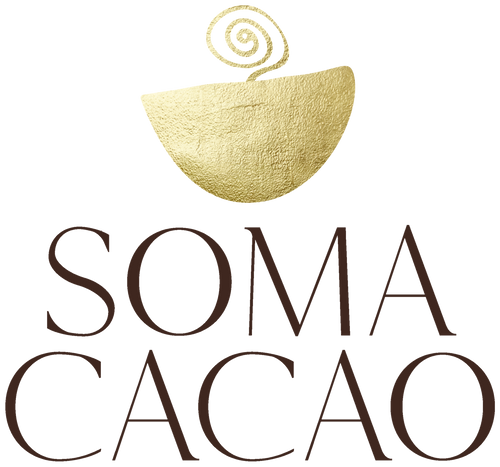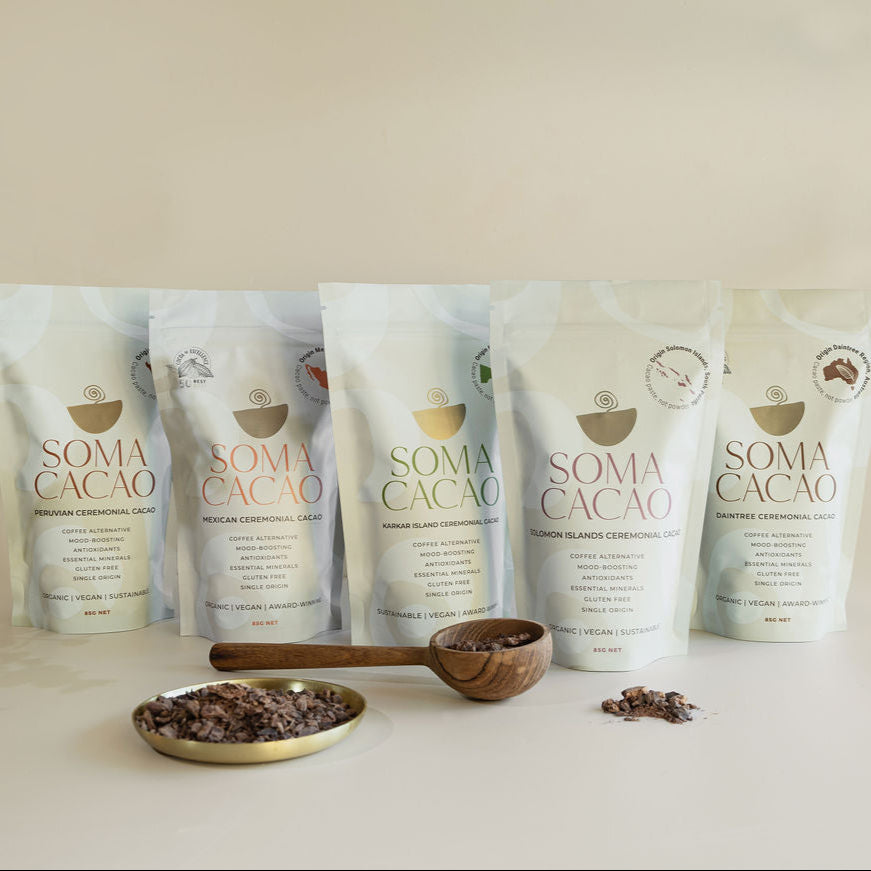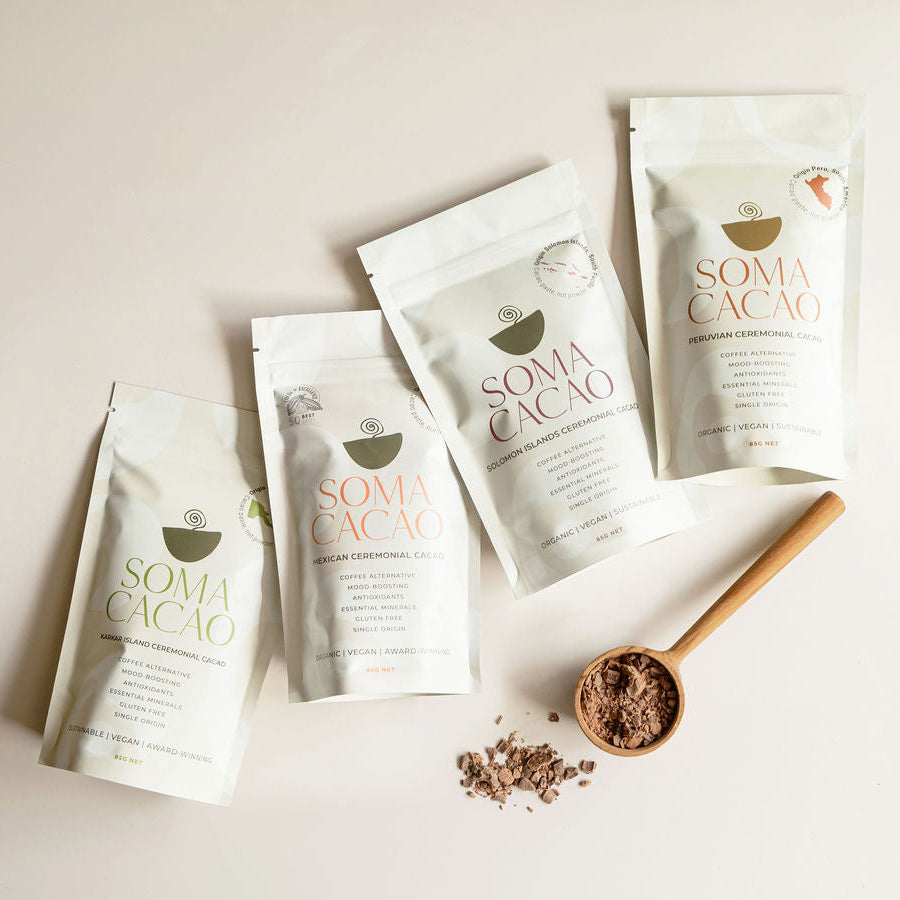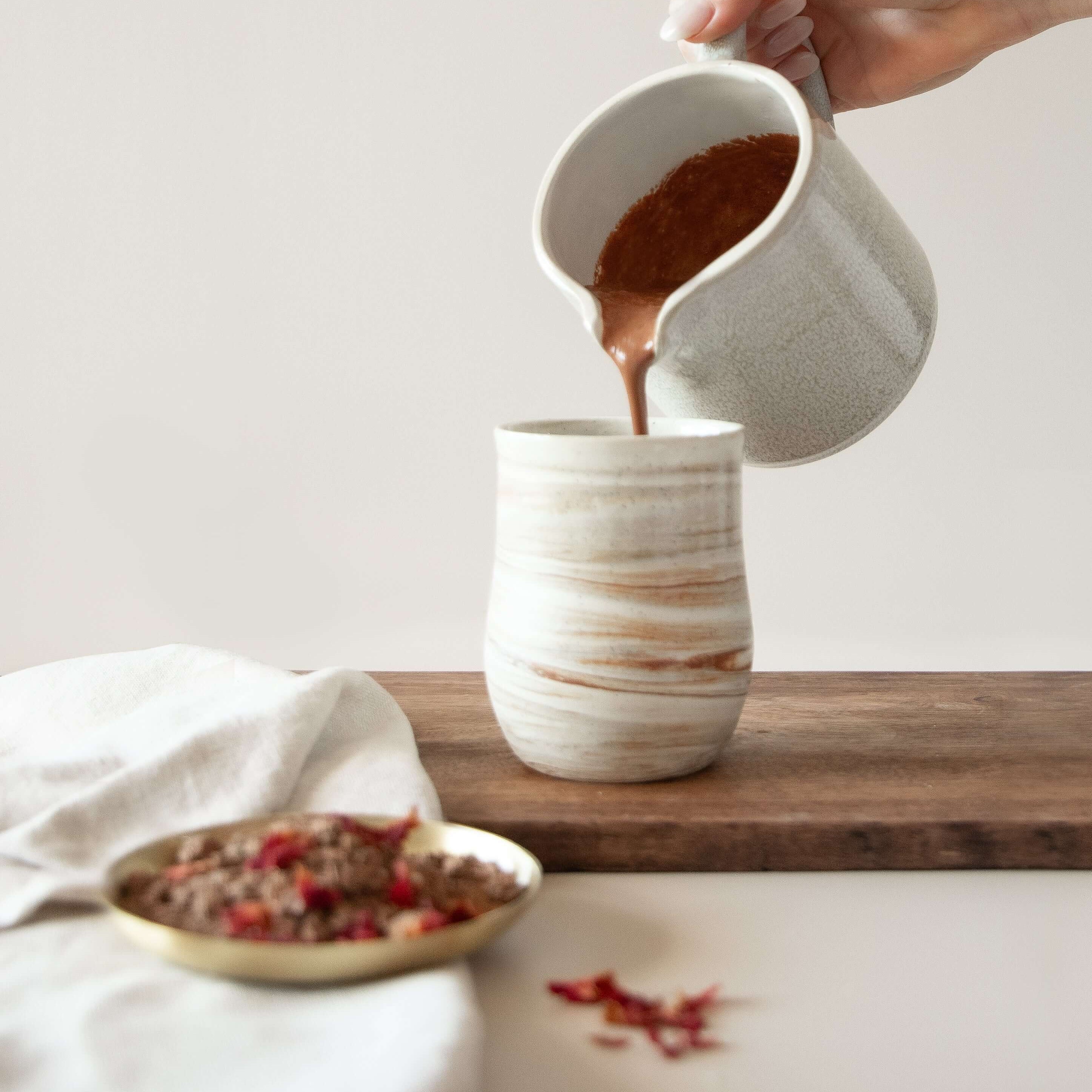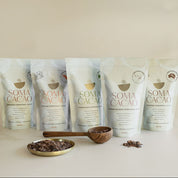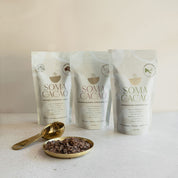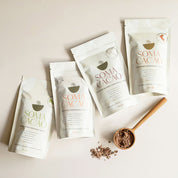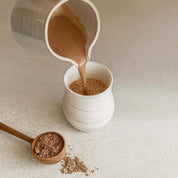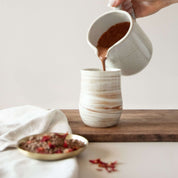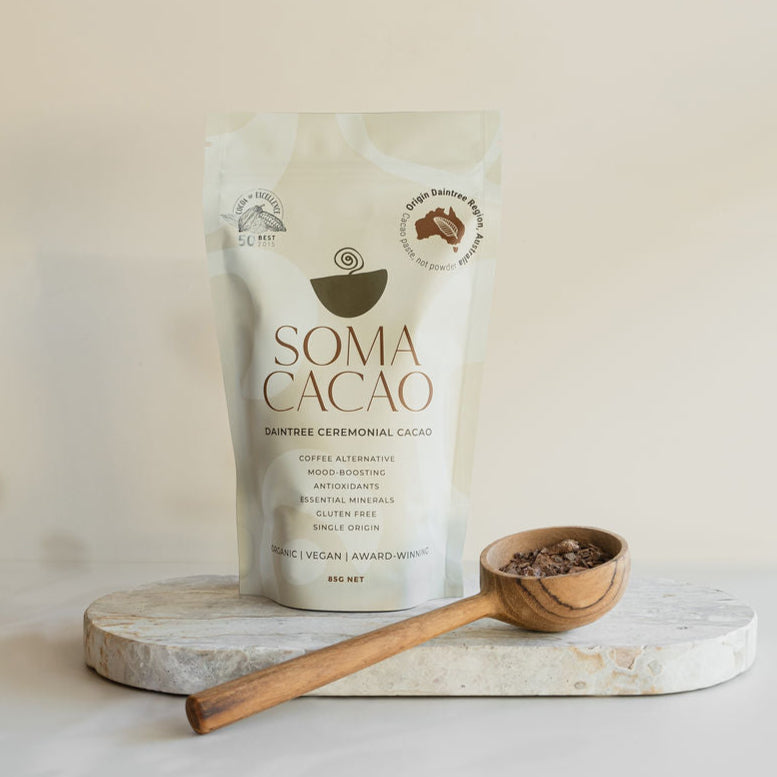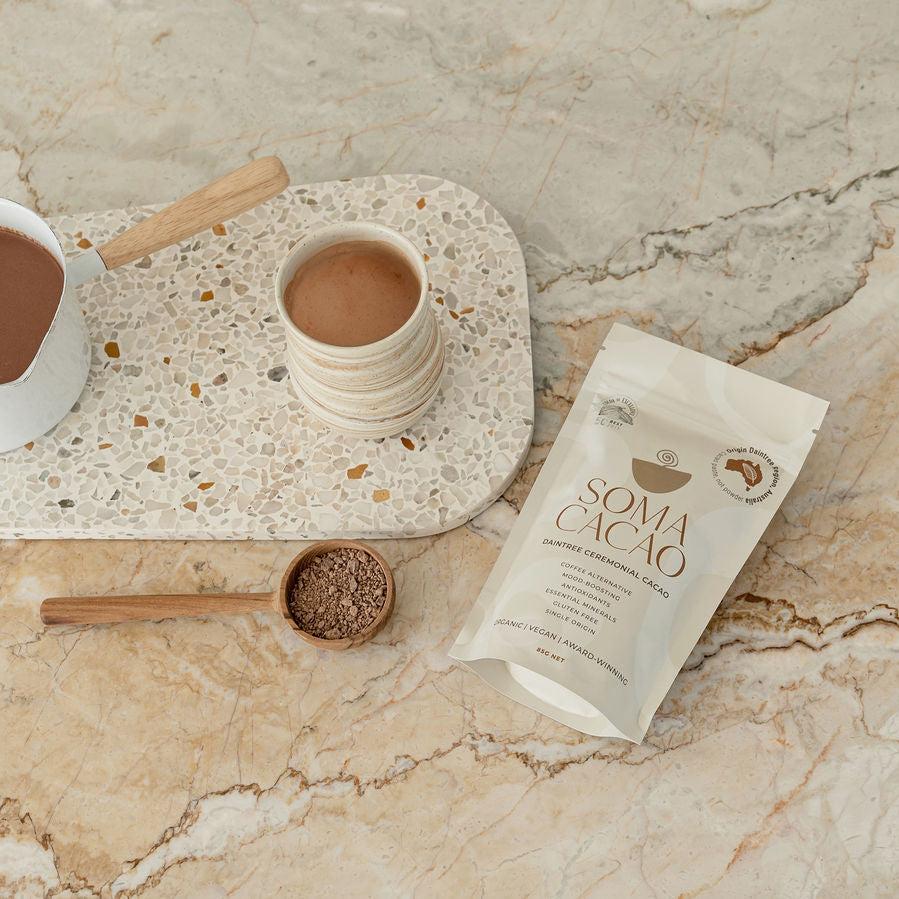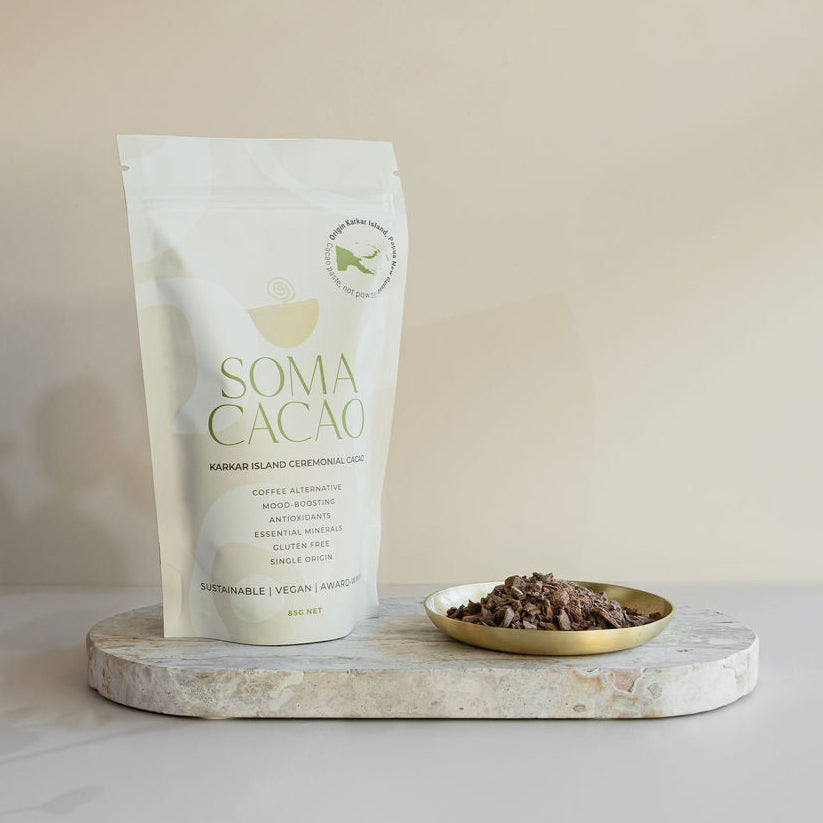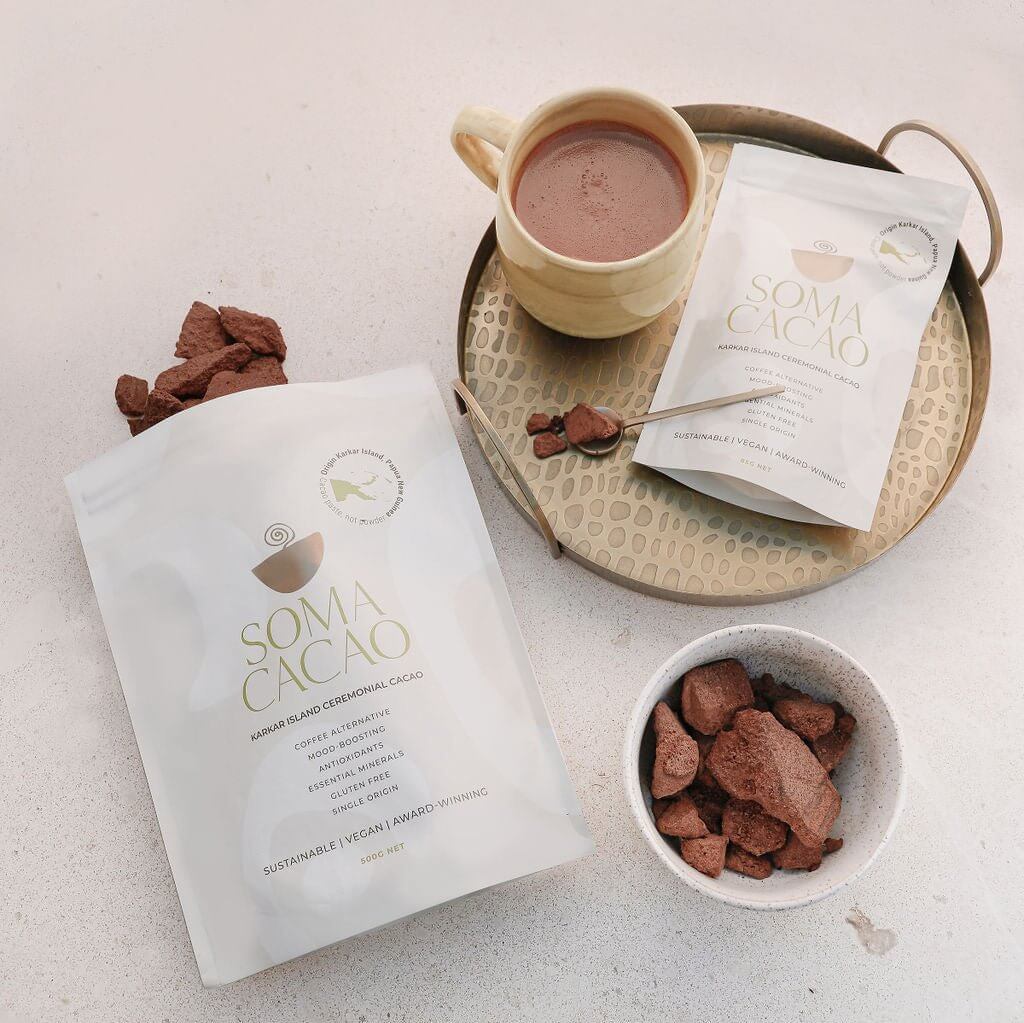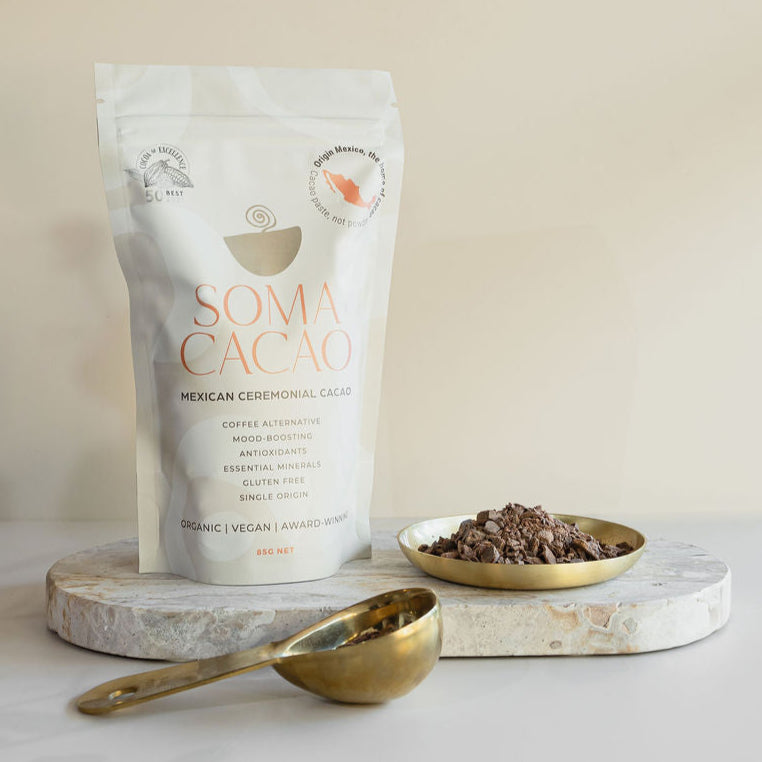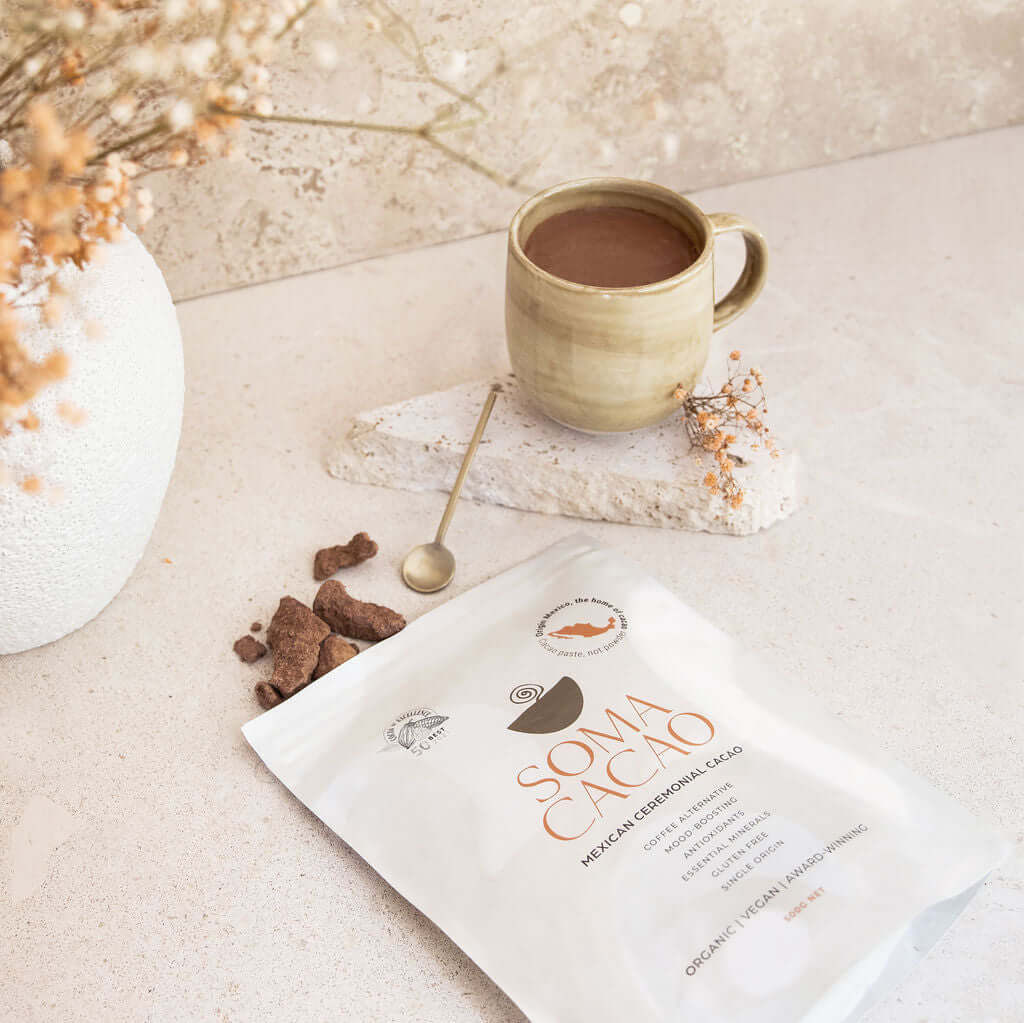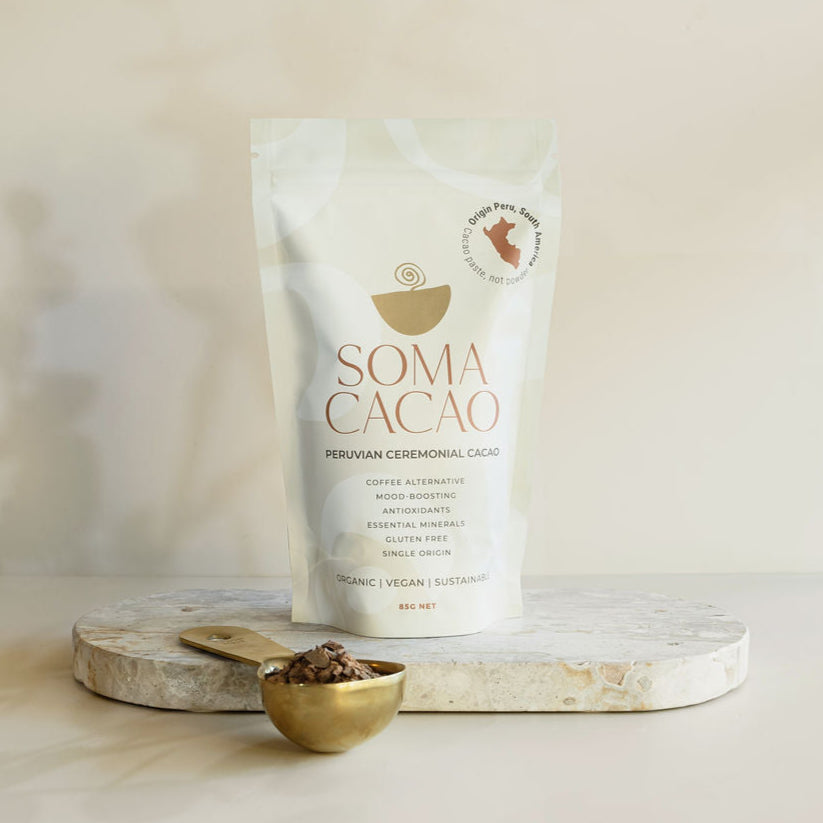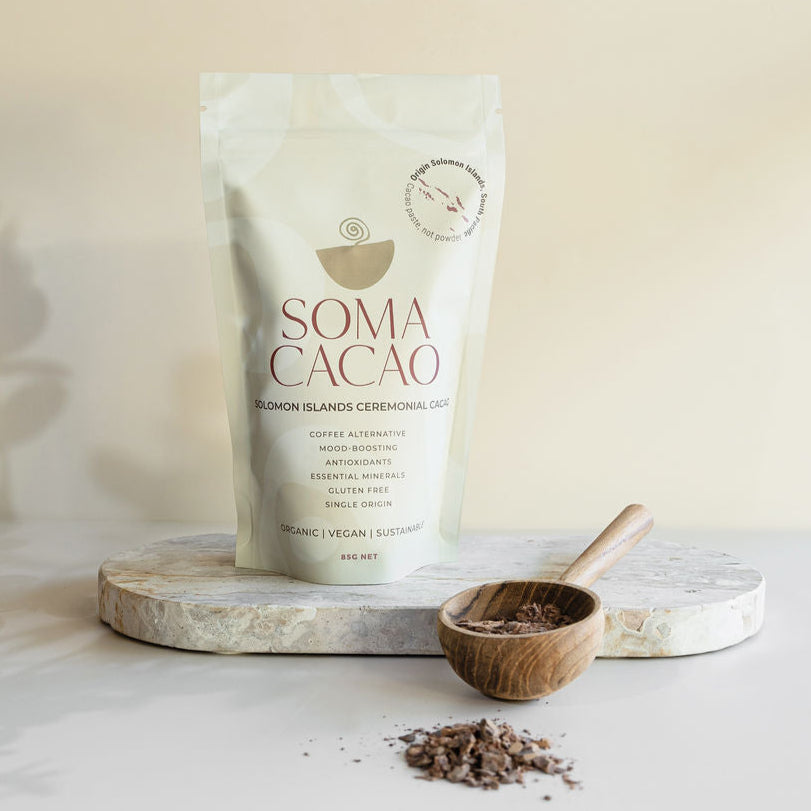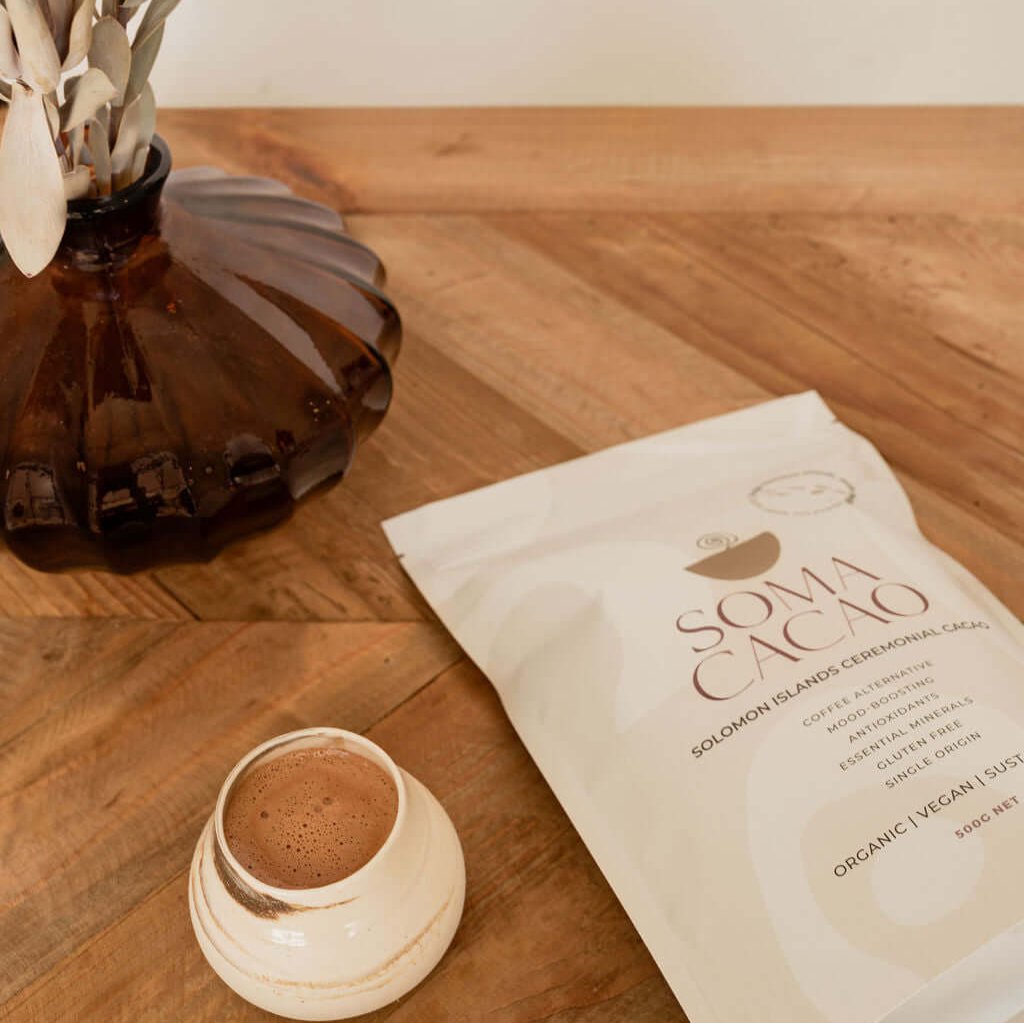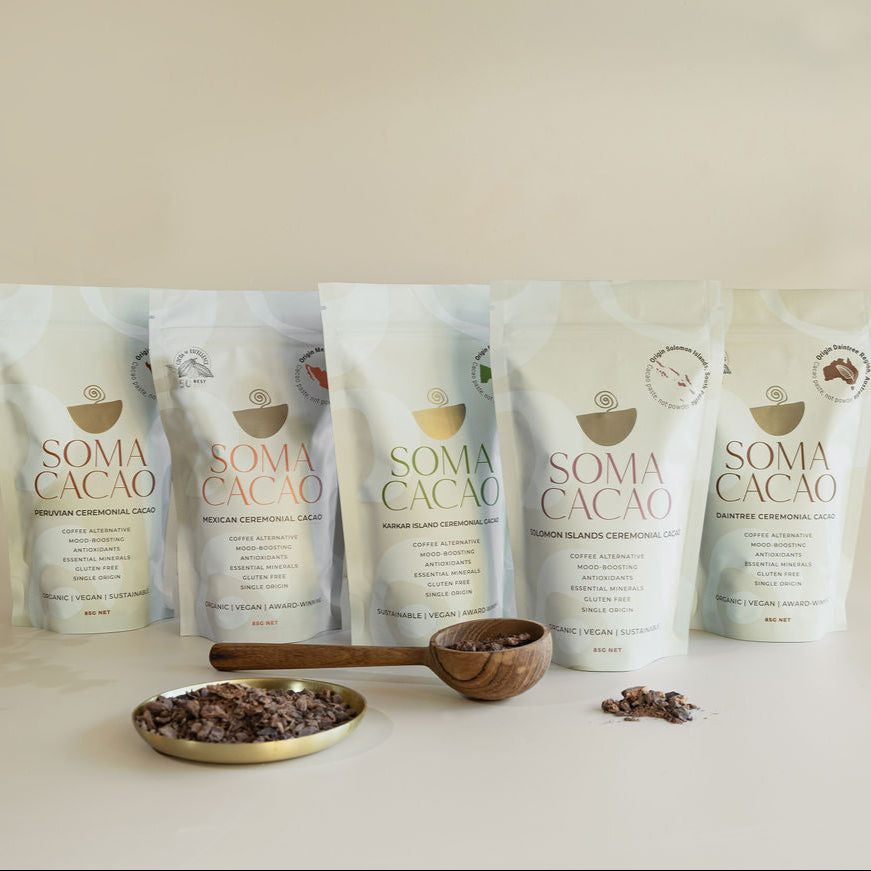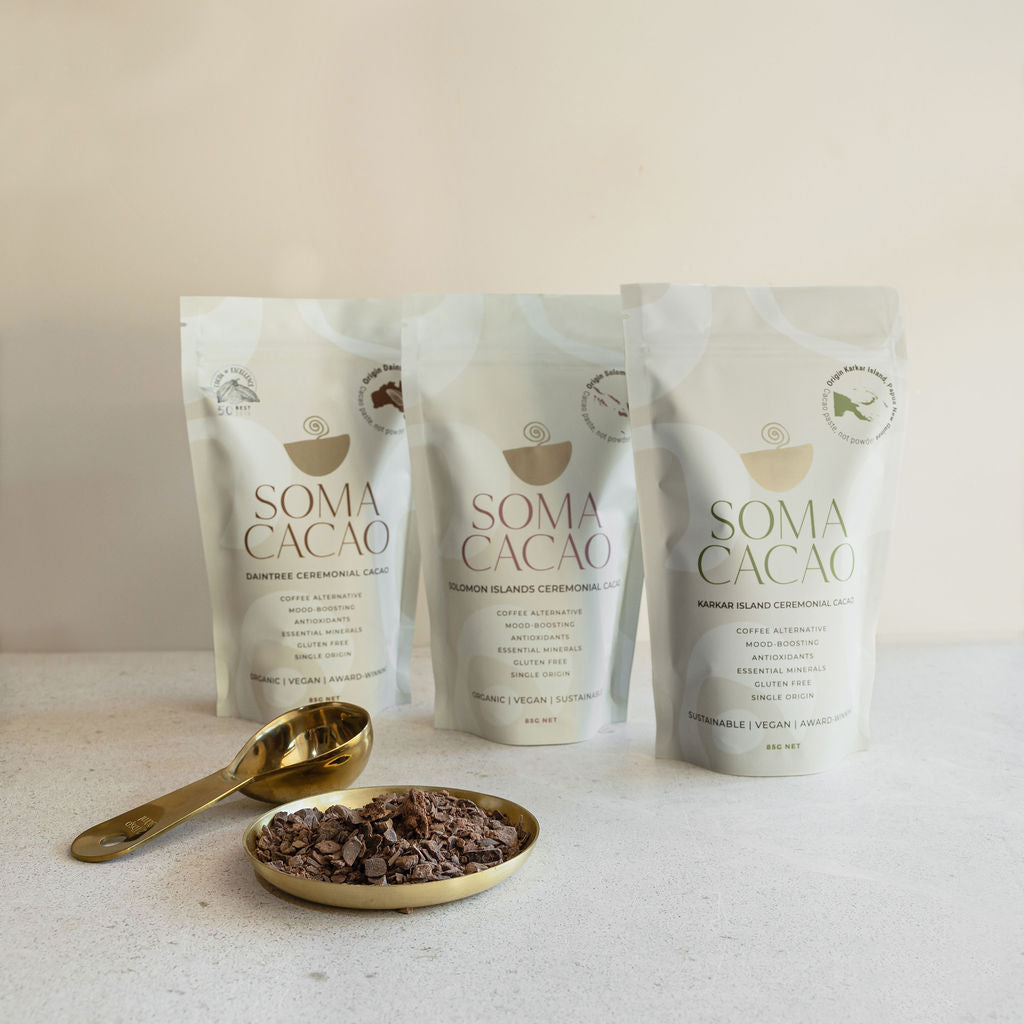What is a Cacao Ceremony? Deconstructing and Reconstructing.

The Ancient Roots of Cacao
Cacao has been used for millenia in ceremonies by the indigenous people of Mesoamerica. These peoples have cultivated a close bond with the cacao plant, and weaved it like a thread through the cultural and religious life of their nations.
At Soma we want to honour the cultures that have lived closely to the cacao plant. But we also recognise that we do not belong to those cultures.
Cacao Ceremony: Cultural Appropriation?
An unfortunate thing has happened linguistically, where we call a Mayan celebration of lunar transit a “cacao ceremony,” and also call a full-moon feathers-and-crystals seance in Byron Bay a “cacao ceremony,” and think the two are the same thing, and must follow the same rules.
But they are not the same thing. Cacao is colour-blind and culturally agnostic: if people of a certain culture relate to it in a certain way, it does not mean that people of other cultures must do the same. The important part of a cacao ceremony is not cultural; it is spiritual. And real spirituality knows no dogmas.
Wisdom from Indigenous Australia
We recently read a beautiful article by the Australian indigenous artist Miriam-Rose Ungunmerr, who belongs to the Ngangikurungkurr people of the Northern Territory, and is a devout Christian. She said that her people know it is Easter when the blue water lilies appear. These lilies give off a beautiful fragrance for some time, then the flowers die, but the plants remain alive, and after three days the people can eat their seeds. Ms Ungunmerr called this the moment Easter becomes the Eucharist.
I imagine Jesus approves of this very much, and that Ms Ungunmerr has a deeper understanding of Christianity than many people who sit for mass in the finest cathedrals.
In the same way, a cacao ceremony is not about obedience to cultural forms. A cacao ceremony is about cultivating a certain inner experience. Forms have been designed to facilitate this experience, but forms are not the experience. And ceremony is just one name for this experience. Another name might be mindfulness, or perhaps contemplation, or surrender, or even love.
Miriam-Rose Ungunmerr calls it Dadirri, and describes it like this:
“Dadirri is inner, deep listening, and quiet, still awareness. It recognises the deep spring that is inside us. We call to it, and it calls to us… When I experience Dadirri, I am made whole again. I can sit on the riverbank or walk through the trees; even if someone close to me has passed away, I can find my peace in this silent awareness. There is no need of words. A big part of Dadirri is listening.”
Ms Ungunmerr says she finds Dadirri “when I am out hunting, when I am in the bush, among the trees, on a hill or by a billabong.” We can find it in a private cacao ceremony, or in a walk in the park, or a warm shower after an ocean swim, in a silent moment with a cat, or in a work break sitting outside in the sun.
All of us have access to Dadirri, but most of us need to build roads to it.
That is what meditation and yoga are about.
It can also be what your daily cup of cacao is about. Cacao contains theobromine, anandamide, PEA, tryptophan and salsolinol, which cooperate to open a little door in our souls, through which we can step to Dadirri.
The Essence of a Cacao Ceremony
A cacao ceremony does not require an understanding of the Mayan calendar. Nor does it require crystals and tarot cards. It requires love, attention, care, quietness, and a humble willingness to spend some time in the presence of a beautiful, nourishing silence. It requires patience and reverence.
Father John O’Donohue put it like this:
“What you encounter, recognize or discover depends to a large degree on the quality of your approach. Many of the ancient cultures practiced careful rituals of approach. An encounter of depth and spirit was preceded by careful preparation. When we approach with reverence, great things decide to approach us. Our real life comes to the surface and its light awakens the concealed beauty in things. When we walk on the earth with reverence, beauty will decide to trust us. The rushed heart and arrogant mind lack the gentleness and patience to enter that embrace.”
Ceremony as a Daily Practice
Of course there is no obligation to drink your Soma Cacao ceremonially. You can just as well drink it at work, or from a thermos on a train.
But it is also important to remember that ceremony is not a chore.
Ceremony is just a way of orienting ourselves to the silent light within.
Cacao opens a window on this light - that is why we love it.
Perhaps it is just a deep breath you take, or a glance out the window at the rain. Or perhaps you drink your cacao quietly with someone you love, or take it on a hike to a waterfall.
However and wherever you drink it, you may notice the moment that cacao washes like a wave of sighs through your body. If you take the time to notice that wave, honour it, and ride it inwards - even for a second - then you have done a cacao ceremony.
It need be no more complicated than that.
Sometimes complications are just distracting.
With pepperberry and wild honey,Rose, Alistair, and the team at Soma Cacao
- Tags: Cacao Hacks History Opinion
0 comments
